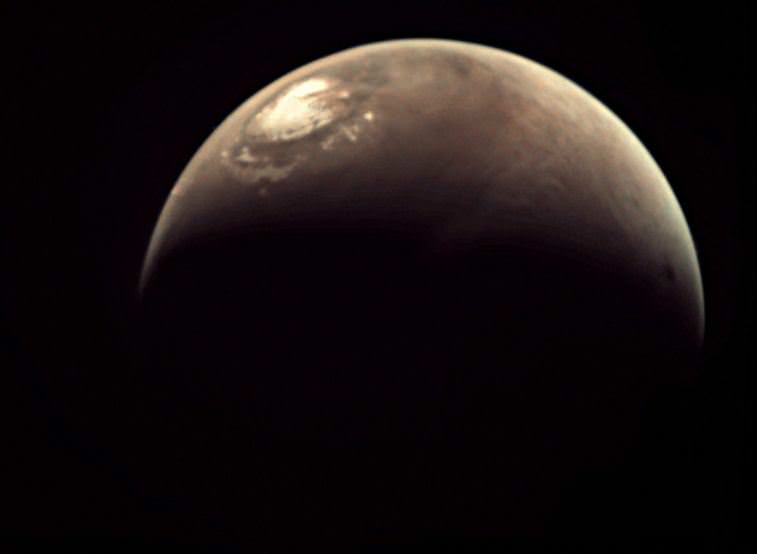Future human Mars mission preview! The team from Mars Express put this great video together which shows what Mars looks like from above, during an elliptical orbit. They created it using 600 individual still images captured by the Visual Monitoring Camera (VMC), and it shows the view from a visiting spacecraft's slow descent from high above the planet, then speeds up during closest approach, and then slows down again as the orbital distance increases.
A Mars Express VMC camera image of Mars from May, 2012. Credit: ESA
Visible are giant Martian volcanoes, a quick glimpse of the ice-covered South Pole, and Mars terminator as day turns to night. Then quickly daylight returns, and then the visitor sees the North Pole, followed by the long climb away from the planet over the equator. Finally, at the end of the movie -- look closely! --the disk of Phobos can be seen crossing over Mars.
The VMC is being used almost like a Mars webcam! It consists of a small CMOS-based optical camera, which can be fitted with an on-pixel RGB color filter for color images. So, it is basically an ordinary camera, but it is in an extraordinary place! It originally provided simple, low-tech images of Beagle lander separation -- a mission which, unfortunately failed and crashed. But the VMC has been resurrected to provide views of the Red Planet. It's not a scientific instrument, but it does provide fantastic views of Mars - including crescent views of the planet not obtainable from Earth.
The images used here were taken during Mars Express' 8,194th orbit of Mars on May 27, 2010 between 02:00 and 09:00 UTC (04:00-11:00 CEST).
More info on VMC.
 Universe Today
Universe Today
